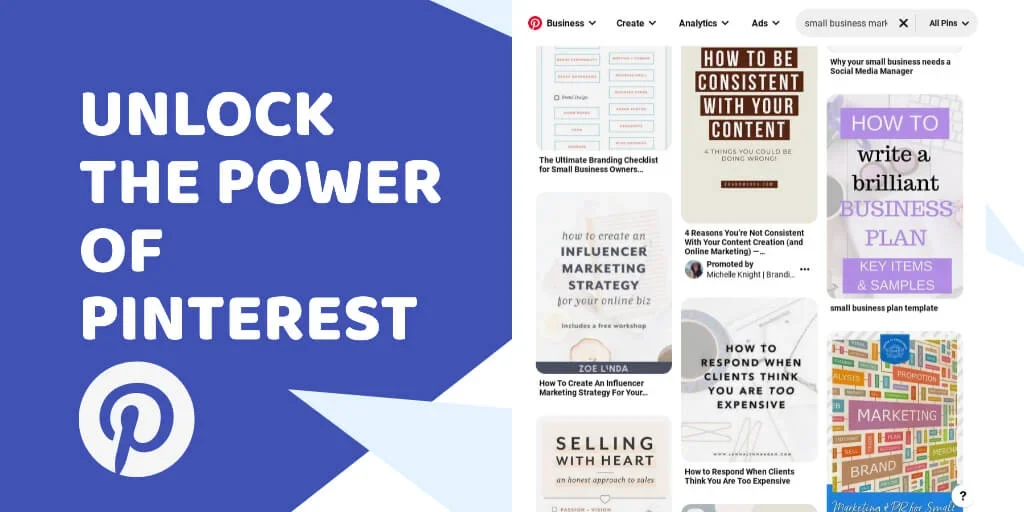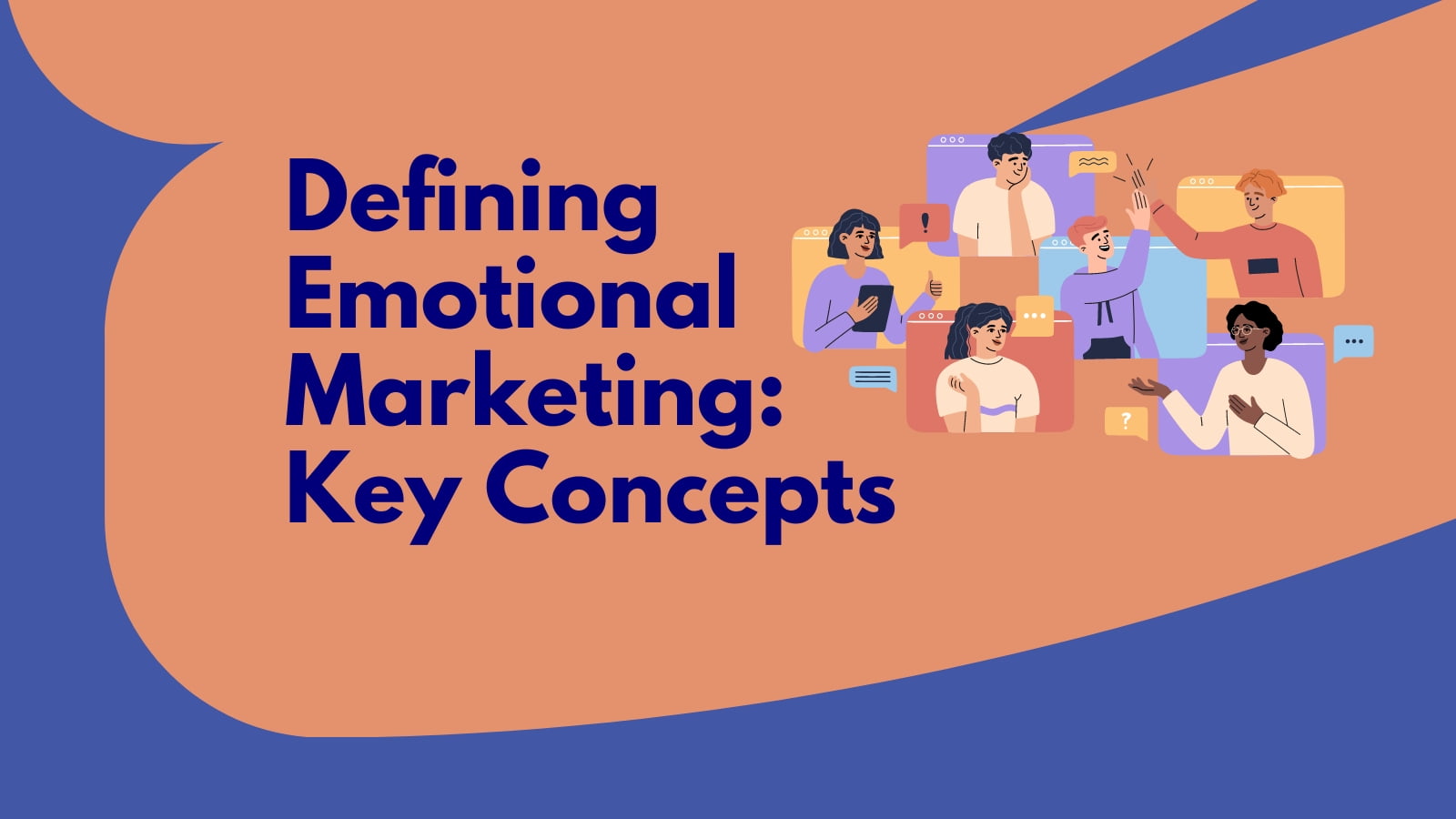UNLOCK THE POWER OF PINTEREST
With over 400 million monthly active users, Pinterest should be part of your content marketing plans. Often overlooked and misunderstood, Pinterest is a platform that can generate engagement, traffic and potentially leads long after you’ve posted your pins.
At first glance you would assume Pinterest is only for foodies, fashionistas and those looking to make home improvements. But, Pinterest is full of niche content and communities which provide opportunities to grow awareness for your business.
Pinterest terms that you need to understand
Pins – These are your content and you will link your Pins back to your website. You must create relevant Pins that link to the correct content. You do not want to confuse your audience by creating a Pin that takes someone to something irrelevant. When you create your Pin, the link will be embedded in your image, making it easy for someone to click through to your website.
Titles – You might consider these to be a headline. You have 100 characters to create a compelling reason why your Pin matters, but only the first 40 are likely to display in the feed. Try to be detailed and descriptive and use keywords. All without being spammy. Remember that you’re trying to appeal to real people. So, talk to them like they are humans. You are not trying to game the system.
Descriptions – With 500 characters available, you can provide a really good description of your content. However, make sure to front load the description with your key message. You want to create a compelling reason for someone to continue reading and for them to click through to your site.
It might seem obvious, but make sure that the description is relevant to the image that you’ve pinned and your title. You can also include keywords and don’t forget to include your brand name. After all, Pinterest is about creating brand awareness.
Keep in mind that descriptions do not appear when viewing the Pin in the home feed or search feed.
Boards – You might consider these to be categories or collections. When you create a Pin you save it to a board. If you have a board for ‘Social Media’ and you create a Pin ‘How to use Pinterest’ you would save it to your ‘Social Media’ board. Other Pinterest users can follow your boards, so you want to make sure they are relevant to your business.
Tip: don’t create lots of boards. Only create boards that specifically tie into your content marketing objectives. Your Pins should promote your content and your brand. Don’t dilute your message.
Board descriptions – You should provide descriptions for your boards. This helps to surface your Pins and Boards in search.

How can Pinterest help your business?
Repackaging your content for Pinterest can be a useful addition to your content marketing plan. Not only is it potentially increasing your reach, but it’s giving you another opportunity to generate leads, increase sales or conversions.
Using Pinterest to promote your business is no different than using any other channel. You first need to understand how Pinterest can help your business, and then you must set objectives for your Pinterest content. And of course, you must measure and evaluate.
But before you start, you need to find out if your target audience is actively using Pinterest to find content like yours. This research will uncover your competitors and what content people are engaging with.
Learn how a social media manager can help maximise the use of Pinterest for your business.
How is Pinterest different to other social networks?
You should approach Pinterest with a business head. Pinterest is a place to showcase your products or service. It provides a platform for you to demonstrate why your products or services are better than your competitors.
Remember: content posted to Pinterest should contribute to your business objectives and you must be able to measure and evaluate those ‘pins’.
Don’t confuse Pinterest with Twitter and Facebook. This is not a place to conduct customer service and it’s not a place to share memes.

Where is the value in Pinterest?
It’s in the ‘long-tail’.
To understand the value of Pinterest for your business, you need to understand how your target audience (or competitors) are using it. This is when you’ll learn that Pinterest is also a search engine and that ‘Pins’ show up in search results (Google, Bing etc).
By creating Pins you increase the chances of someone discovering your content. While Pinterest is not necessarily part of your SEO strategy, it should form part of your content marketing strategy.
How many times have you Googled something and landed on Pinterest?
Have you used Google’s image search and landed on Pinterest?
It’s likely that a lot of your customers are performing similar searches and finding themselves on Pinterest. And this is one area that sets Pinterest apart from other social networks. Content on Pinterest is ‘Evergreen’ and therefore can be found by people long after it has been published. This ‘long-tail’ effect could give you an advantage over your competitors.

Pinterest is very visual. Pins make an impact. Unlike Google which is mainly text based, users of Pinterest are drawn to content that is striking and appealing. This gives you an opportunity to create better Pins than your competitors and create engagement. Learn why engagement is the new SEO and how this can help optimise the use of Pinterest for your business.
Make Pinterest work for you – make sure your pinterest content is relevant to your business objectives.

People use Pinterest to get inspiration
Your content marketing plan will include content based around:
- Blog posts
- How to’s and tutorials
- Tips
- Lead generation
- And other relevant content for your audience
This content is of course designed to engage your audience. Therefore it makes perfect sense to include Pinterest as one of your marketing channels. If you consider how your Pins will be discovered, it’s likely that your content will fall into the ‘evergreen’ category. This is content that is not time sensitive and performs better over a longer period of time. In many ways this is how you would approach your website content. When creating your pins remember to include a call to action (CTA). You want your Pins to drive action.
Much like your website content, Pins can take longer to have an impact. However, unlike other social networks, your content is more likely to be found long after you published it. This is why Pinterest can continue to generate leads for you.
What should your Pins look like?

Pins use the 2:3 aspect ratio
Pinterest recommends using a 2:3 aspect ratio, or 1000px wide by 1500px tall. Pins with an aspect ratio greater than 2:3 won’t display properly in people’s feeds.

Use eye-catching images
Pins should be striking, eye-catching and appeal to your target audience. You can use images and videos to create a Pin – just remember to think vertical so you can make the most of that 2:3 aspect ratio.

Include a Title and a Description
Pins must include a Title and a Description. Make sure these are optimised for your target audience i.e. use keywords.
Your descriptions will give you a chance to test your copywriting skills. You want to be informative and provide value while at the same time encouraging readers to visit your website.
You’ll generally find branded content includes an image with a text overlay. While you can create multiple pins for each of your website articles, it is not recommended to reuse your pins. So, you’ll want to create a new pin each time you want to promote your content on pinterest. Depending on your content plan, you should be thinking of creating at least 3 pins that you can share over time.

Optimising for Pinterest
Remember: you’re creating content for people, not machines. Therefore you are optimising your content for people. In other words, keep it simple and make you content easy to read and understand.
You’ll need to do keyword research. Pinterest is no different than any other marketing channel and you’ll want to understand what keywords describe your content to your Pinterest audience. Use Pinterest search to learn what phrases and keywords other people are using to describe similar content. Just like SEO keyword research, think about long-tail keywords. Look for niche categories relevant to your business.
Related: Unleashing the power of SEO can enhance the effectiveness of Pinterest for business.
Your ideal Pinterest content will share stories, share benefits and create value for your ideal customer.
Hashtags
Just like other social networks, Pinterest lets you include hashtags in your Pin descriptions. This gives you another chance to get your Pins discovered. If people are clicking on hashtags, there’s a chance they’ll discover your Pin. Hashtag discovery on Pinterest displays the latest Pins with that hashtag.Unlike Instagram, Pinterest prefers fewer hashtags. Ideally, you’ll only create hashtags for your keywords and keep your hashtag usage to a minimum. I’d suggest only using 2 or 3 hashtags with each Pin.
Understanding other social media platforms like Instagram can enhance the use of Pinterest for business.
Where to start?
- Identify your keywords. These will be a mixture of broad terms and long-tail keywords.
- Make sure to include your keywords in your profile, your board titles and your board descriptions.
- When you create your Pin, make sure to include your keywords in the Pin title, description and any hashtags that you include.
- Check that your webpage that your Pin is linking to includes your keywords.

Create your Pinterest Plan
Your Pinterest plan will be dependent on how much time you can devote to the platform. And please remember to think about your business objectives. You’re not using Pinterest to have fun – you’re trying to grow your business.
With this in mind….
How many pins per day should post?
Try to be active daily, but you don’t need to Pin new content every day. However…create new pins each week.
Every time you publish a new blog post or article you should be creating content for Pinterest. If you publish 2 articles per week, that could be 6 new Pins that you can schedule over the coming weeks.
If you are new to Pinterest and have lots of ‘evergreen’ content on your website, start creating Pins for those articles. It won’t take long before you have several months of content to share on Pinterest. 20 articles could be the equivalent of 6 months of Pins.

Check your analytics.
Reviewing and evaluating your Pinterest content will be part of your plan and should be done regularly. You can get analytics for your Pins within Pinterest itself and of course you need to check your website analytics to see how many visitors are coming from Pinterest.

What do you do if your Pins aren’t performing as well as you’d hope?
- You can try to create better images; and
- You can try to create better copy.

Pinterest is still a social network.
While I don’t recommend investing time creating Pins that aren’t relevant to your business objectives, you will still need to invest a little time engaging other users. You most definitely should like and reply to any comments your Pins get. You don’t want your account to feel generic or corporate.
If you like other people’s Pins, make sure to engage with them. If you find group boards that are relevant to your business, ask to join them so you can share your content to those boards. Think of group boards like Facebook groups.
But never lose sight of your business objectives and the reason you’re doing Pinterest in the first place.




